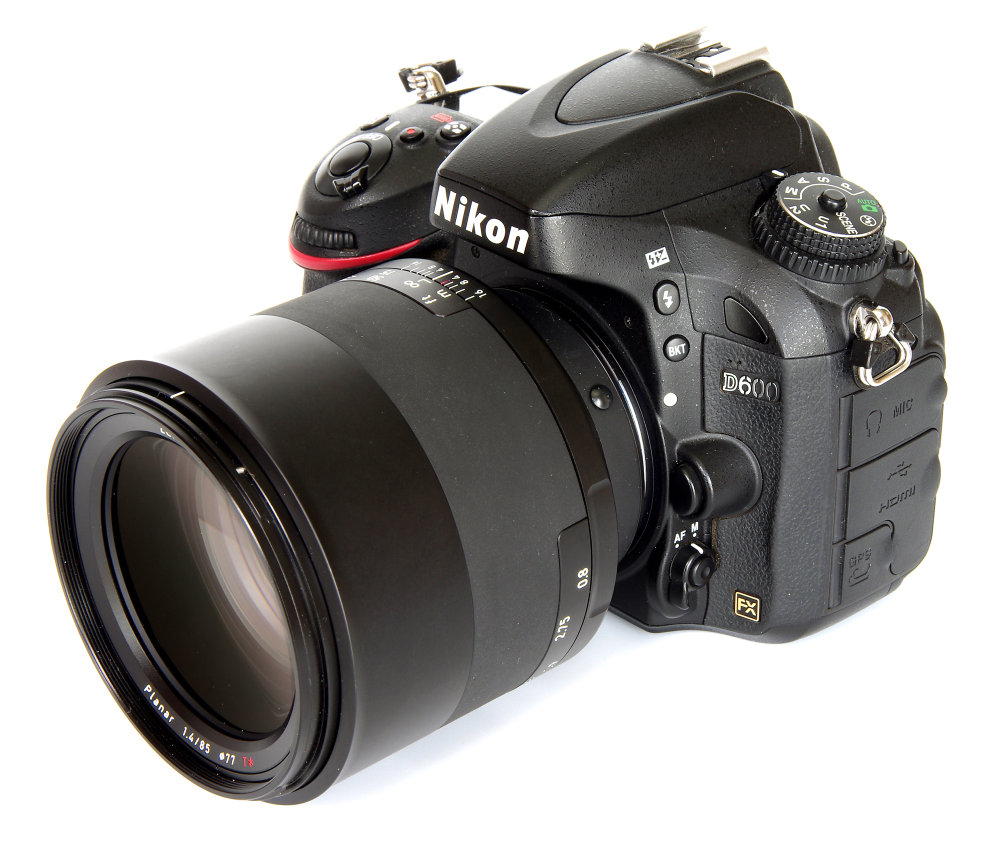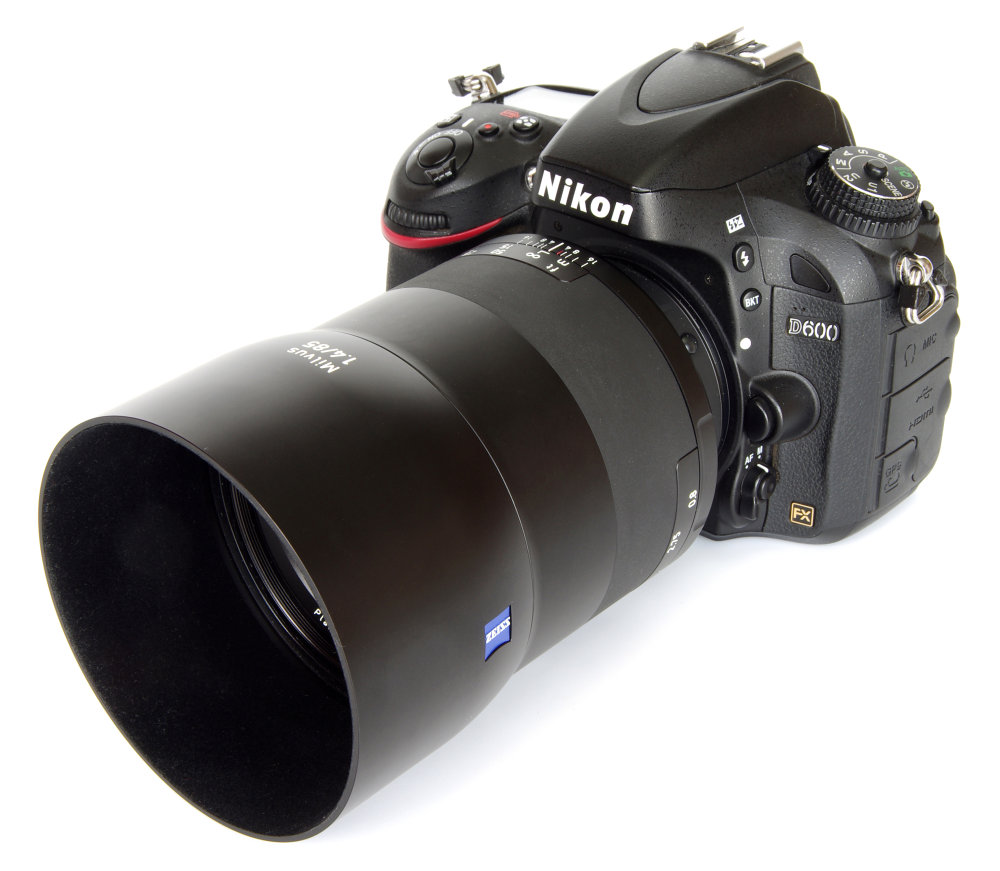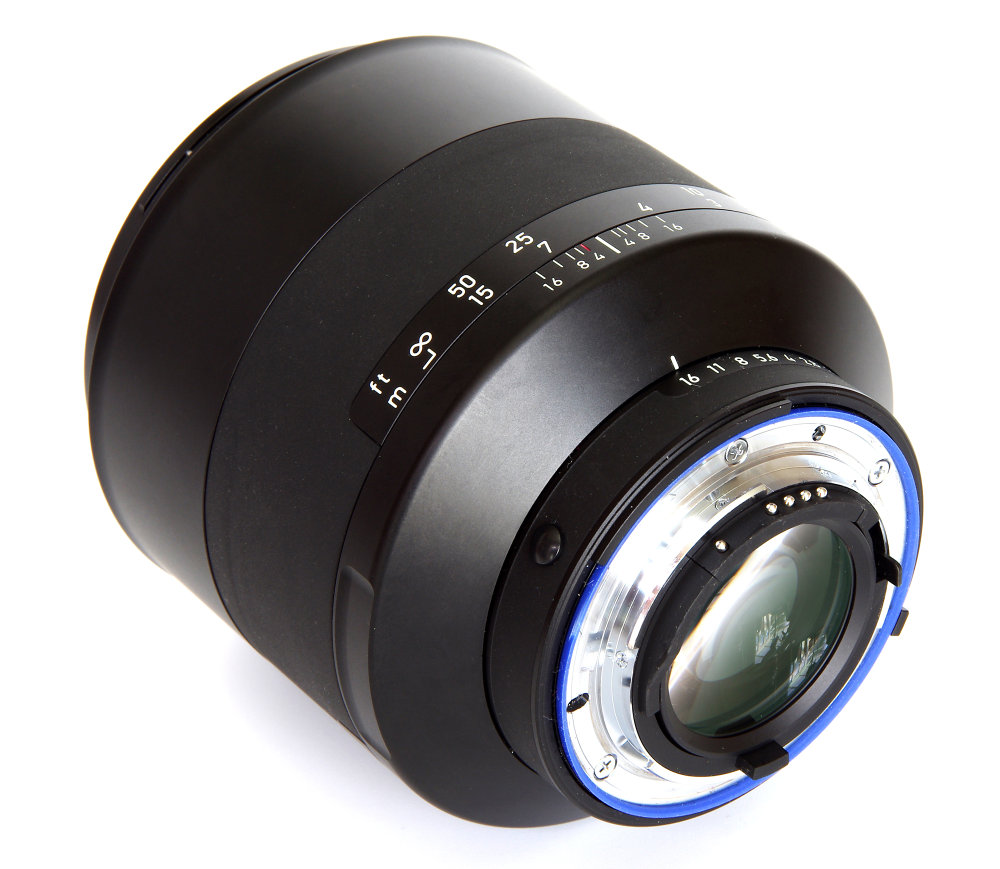Zeiss Milvus 85mm f/1.4 Review
Zeiss Milvus 85mm f/1.4 Handling and Features
The Milvus 85mm f/1.4 is a Planar-based design, the Planar being a symmetrical lens of large aperture designed in 1896 and basically unsurpassed even today. It has 11 elements in 9 groups, eight of which are Anomalous Partial Dispersion glass. The elements are a floating design, meaning that they move relative to each other as we focus, thus maintaining performance at all distances. The Zeiss website bills the 85mm as “The Champion of Bokeh”, a laudable sentiment for a lens in this classic focal length, extensively used for portraiture. 85mm lenses have traditionally also been the focal length that surpasses in terms of quality of results. The Nikon D600 was used in this review and the Milvus balanced perfectly, making an ergonomic, if fairly heavy, combination.
The lens is weather sealed, manual focus only, has a 9 blade diaphragm and a 77mm filter thread. It weighs 1210g in Nikon version and 1280g in Canon. Focusing is down to 0.8m (2.62 feet) which is about what we would expect from a lens of this focal length.
The diaphragm can be controlled via the aperture ring, which is click stopped. The Nikon version has a small screw on the back of the lens that can be turned to de-click the ring for video applications. The lens can control the aperture in the traditional way, or if set on f/22 this control can be passed to the camera body.
Both aperture ring and focusing ring turn in the correct direction for Nikon cameras, a useful point if the lens is to be used alongside any Nikon manual focus optics. The Canon version operates correctly in the reverse direction. The focusing is ultra-smooth, with a very long throw, which aids accuracy. On the Nikon D600 used for this review manual focus was very easy, not always the case with modern AF focusing screens. The limited depth of field at open aperture makes for very easy focusing precision. The depth of field scale on the lens is a very useful aid, at one time to be found on virtually all lenses. Also marked is the infra-red correction mark, used to compensate for the focus shift in the infra-red region of the spectrum.
Zeiss prevents any chance of flare with the beautifully engineered metal lens hood provided. This clicks into place with the usual Zeiss precision and is another reflection of the high quality of workmanship that clearly has gone into the manufacture of this lens. Its use also helps to prevent any impact damage to the lens itself.
Add your message
Please login here or if you've not registered, you can register here. Registering is safe, quick and free.
photodo Stats
428 MTF tests
74 in-depth photodo reviews
100+ users join each day
Help the lens community by reviewing or rating a lens today via our lens search
Latest Lens Reviews
- Chinon 28mm f/2.8 Vintage Lens Review
- Canon EF 70-200mm f/4L IS II USM Lens Review
- Samyang AF 85mm f/1.4 EF Review
- Sigma 70mm f/2.8 DG Macro Art Review
- Samyang AF 24mm f/2.8 FE Review
- Meike 50mm f/1.7 Review
- Tamron 70-210mm f/4 Di VC USD Review
- Lensbaby Burnside 35mm f/2.8 Review
- Asahi Super Takumar 50mm f/1.4 Review
- Asahi Super-Multi-Coated Takumar 135mm f/3.5 Review



